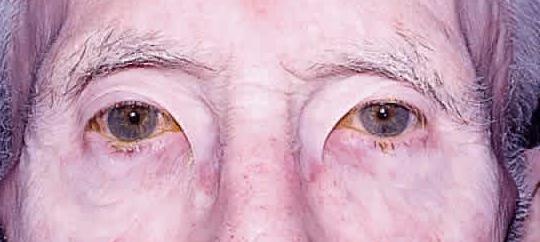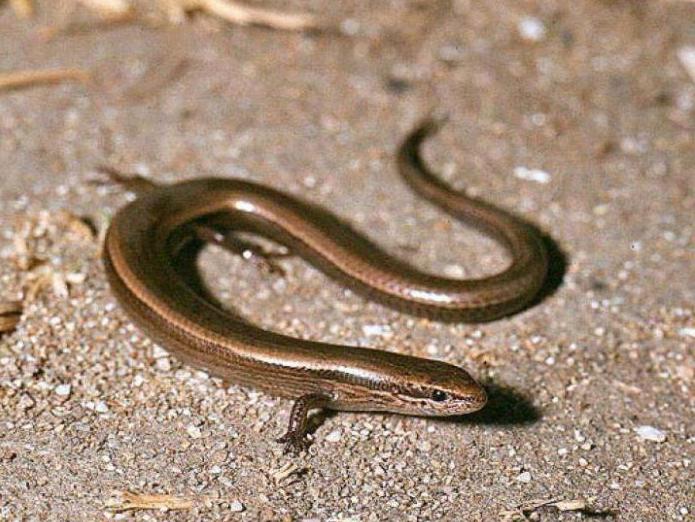Rudiment is proof of the historical development of the organic world
Rudiment is an organ whose main meaning iswas lost in the process of evolutionary development of the organism. Under this notion are also structures that are reduced and differ less in comparison with the corresponding structures in other organisms. It was believed that the rudimentary organs are completely useless, but many of them still perform some minor or relatively simple functions with the help of structures, most likely intended for more complex purposes.
Strange gifts of evolution

By the beginning of the XIX century, comparative anatomy,also known as comparative morphology, developed as an independent biological discipline that examines the general patterns of development and structure of organs by comparing various species of living beings at different stages of embryogenesis. It has become the evidence base for the origin of man from other representatives of the animal world. The anatomists identified the same organs in different organisms, differing in size and shape. There were cases of complete absence of some of them or relatively poor development in comparison with the same organs in other species. Underdeveloped organs began to be called rudimentary (from the Latin rudimentum - "initial stage, rudiment"). They seemed useless and on the way to extinction.
Rudiment is the body that was laid in the course ofembryonic development, but eventually ceased to develop. In adult forms in the future he remained in an underdeveloped state. Such organs or parts of them can be found almost in every species of animals and plants. In comparison with homologous (similar) structures of similar organisms, they are either underdeveloped, or devoid of any important component.

There are similar organs in our body. So, for example, wisdom teeth are a person's rudiment. it also organs such as the third eyelid, orepicanthus, coccyx, appendix of the cecum, muscles of the ears, causing their mobility, hairline on the trunk, extremities. In total, more than 100 can be counted in the human body. They represent the remains of those organs that had a fully developed form in the corresponding ancestral form.
Evidence of the historical development of the organic world
Rudimentary organs as a result of somechanges in the environment, in the lifestyle of a certain species lost their importance for survival and gradually ceased to function. Do not forget about the constantly occurring mutations, which led to a decrease in the size of various organs, the weakening of their functions. In the case of their considerable significance for survival, the mutating organisms were eliminated.
The structure that is in the process of elimination is referred to as the "rudiment". it idiosyncratic The process of evolution based onmutations, hereditary changes of some individuals. In organisms with insignificant development of the system of regulatory correlations (interrelationships), parts are slowly co-adapted. It passes in the order of natural selection of more vital, harmonic relationships. This is a mutual logical functional adaptation in the course of the evolutionary transformation of some organs of one individual or a group of them, as well as various living beings of the same biocenosis.
A similar example of a rudimentary structurea man can be an appendix (vermiform appendage). This is the remnant of a blind outgrowth, once a large functioning organ in the digestive system of herbivores. Its functions are clear enough. Fiber-rich food for its digestion requires a long time, blind outgrowth is a place in which, with the participation of the microflora living in it, a gradual process of digesting plant cellulose takes place. In the course of evolutionary development our ancestors began to eat less fiber, and more meat, which led to a gradual decrease in blind outgrowth. He turned into a vestige, but not useless. His role in maintaining human immunity is significant enough. The appendix preserves the original microflora of the large intestine, being an incubator of E. coli. People with a remote appendix after having infectious diseases are much more difficult to return the intestinal microflora back to normal. That is why the appendix is often called a kind of farm for the reproduction of useful microorganisms. There are allegations that the removal of the appendix increases the risk of malignant neoplasms.
Rudiments in animals

Other living beings also have a lot ofbodies that have lost their functions during the natural historical development of organisms and are on the way to extinction. This is, for example, located in the thickness of the abdominal muscles of the pythons and whales, which are rudiments of the hind limbs. The rudimentary organ of the animals living in the dark is the eyes. In wingless birds, these are the rudimentary bones of the wing. There are many organs that have lost their original meaning, and plants. So, on the rhizomes of the lily of the valley, couch grass, fern were found scales that are rudiments of leaves. In the marginal inflorescences of Compositae under the magnifying glass, underdeveloped stamens are clearly visible. In the staminate flowers of a cucumber, the remainder of the pistil, which is in the center of the tubercle, is also a rudiment. These are all significant evidence of the historical development of the organic world.
Atavisms
Scientists also distinguish manifestations of certainindividuals of signs that were peculiar to their distant ancestors, but are absent from the nearest representatives. Such manifestations are called atavisms. The most characteristic examples are the caudal appendage, fistulas in the throat, overly pronounced hairline, the presence of additional pairs of mammary glands, and others. These signs, lost in the course of evolution, are encountered as a rare exception.
It should be noted that atavisms and rudiments arenot identical concepts. Rudiments are present in all individuals of the species, they have certain functions. Atavisms are found only in some representatives and do not carry any functions. By the way, they should not be confused with developmental anomalies that have a different nature, such as branched ribs, hare lip, a phenomenon of six fingers, and others.

All discovered rudiments and atavisms are signs, corresponding to a certain stage of developmentevolutionary tree. A clear proof of this is that organs that have become useless to the organism can persist for a long period of time, gradually reducing and collapsing later due to mutations.
In modern biological science and today inThe focus of research on the genome of living beings, including humans. Data on the origin of rudimentary organs will help to answer one of the topical questions about which genes are included or are blocked in the development and reduction of embryonic organs.
"Rudimentary organ" in technology
The concept of rudiment in a figurative meaning asthe remnant of the vanished phenomenon is also used in engineering. In the development of technological progress, there is a clear analogy with biological evolution. It is also often called rudiments parts of mechanisms, machines or other devices that lost their meaning at the present stage of development of a certain system, but continued to be preserved for compatibility with previously adopted standards. Examples of rudiments in computer technology are the modem, floppy disk drive. In automotive engineering, the "rudimentary body" is the ignition lock, in aviation such an example is an automatic radio compass.
</ p>


